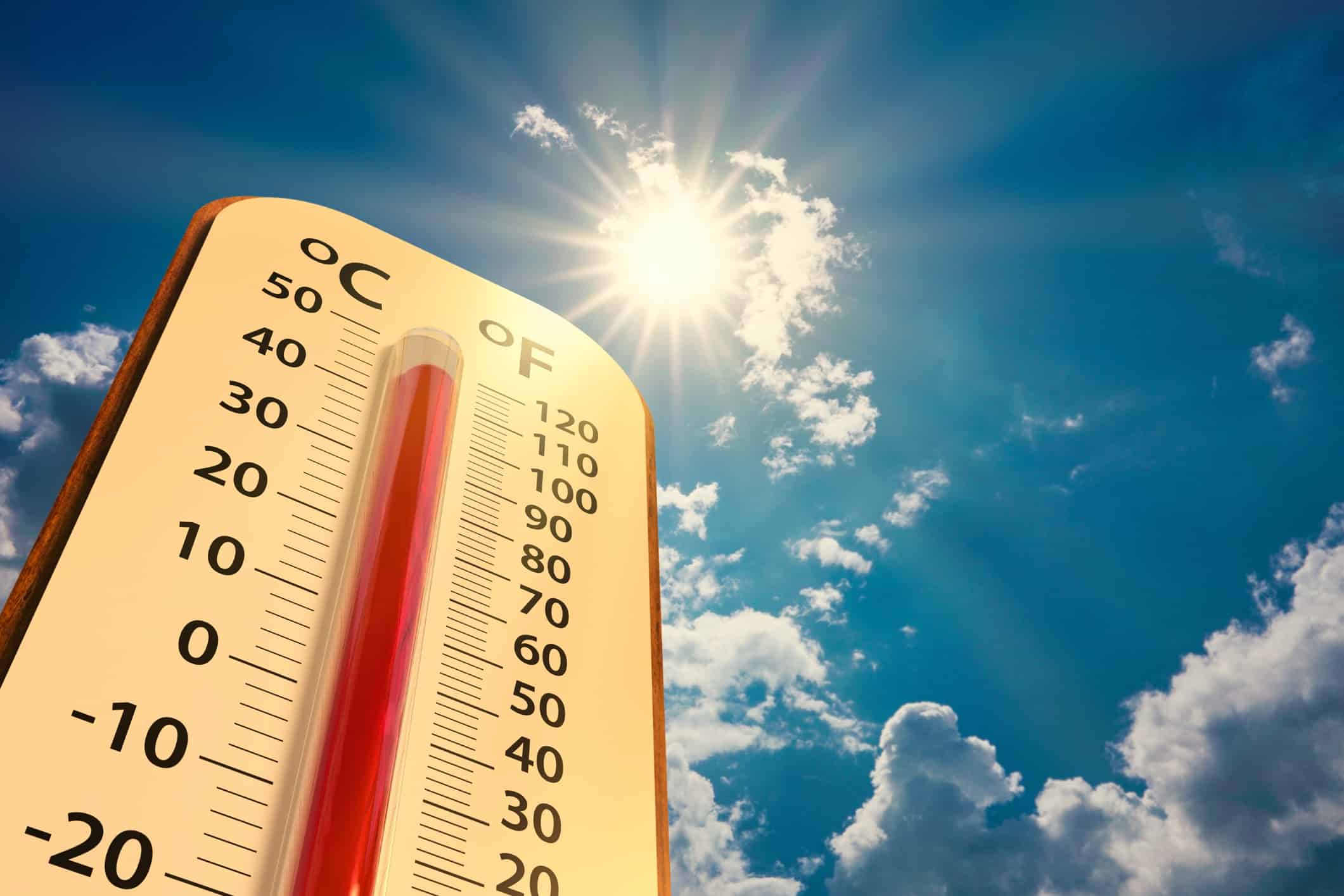Warming months throughout the year, mixed with differing weather, will make some days unbearable. Understanding that there are different types of heat will come in handy during these warmer months. It can help a person know how to stay cool and also not get overheated around this time of the year. A person’s body will respond differently to the heat depending on the temperature and the relative humidity, and it is important to account for this.
There are two main types of heat: dry heat and humid heat. Dry heat is present in most desert climates, while humid heat is present on the east side of the U.S., where moisture from the Gulf Coast flows northward. Dry heat is when relative humidity levels are at or below 30%, and humid heat is when relative humidity levels are above 30%.
What is Dry Heat?

Only a few states across the country have cacti.
©Brent Coulter/Shutterstock.com
Dry heat is a combination of a temperature of over 90 degrees; however, the humidity is 30 percent or less. This type of heat typically occurs in desert climates. Dry heat occurs when there is low humidity, which measures water vapor content in the air. Rainfall contributes to humidity levels, so areas with very little rainfall are more prone to dry heat, like Las Vegas or Phoenix. Often, dry heat does not “feel” as hot as humid heat because the body can more effectively cool itself by sweating. In dry air, not only does the sweat evaporate quickly off the skin, taking extra heat with it, but the moisture from your saliva and breath will also quickly evaporate, resulting in an unpleasant “dry mouth.”
What is Humid Heat?

Major rainfall over a long period of time will make that area rather humid.
©iStock.com/Daria Nipot
Humid heat is a result of high temperatures and high levels of moisture in the air. This is where temperatures are at or above 90 °F, and there is a relative humidity of 30% or more. Humid heat results from high temperatures and high levels of moisture in the air. This means sweat does not evaporate as easily, making it harder for the body to cool off. As a result, it can “feel” hotter than the same temperature in a dry environment.
What States Have Dry Heat?
You’ll hear a lot of locals say, “But it’s a dry heat,” and they much prefer it to anywhere that’s humid. Most of these people live in desert areas, valleys, and places where it simply does not rain very often. Although it still gets rather hot in some of these places, at least it normally feels like what the temperature says it is. There’s not much guesswork or calculation into what the weather is going to be. What causes a state or a region to be dry? Well, when the amount of precipitation that falls is less than the amount that evaporates, the climate has a shortage of moisture and, as a result, low average rainfall.
There are quite a few states that experience dry heat throughout the year.
New Mexico
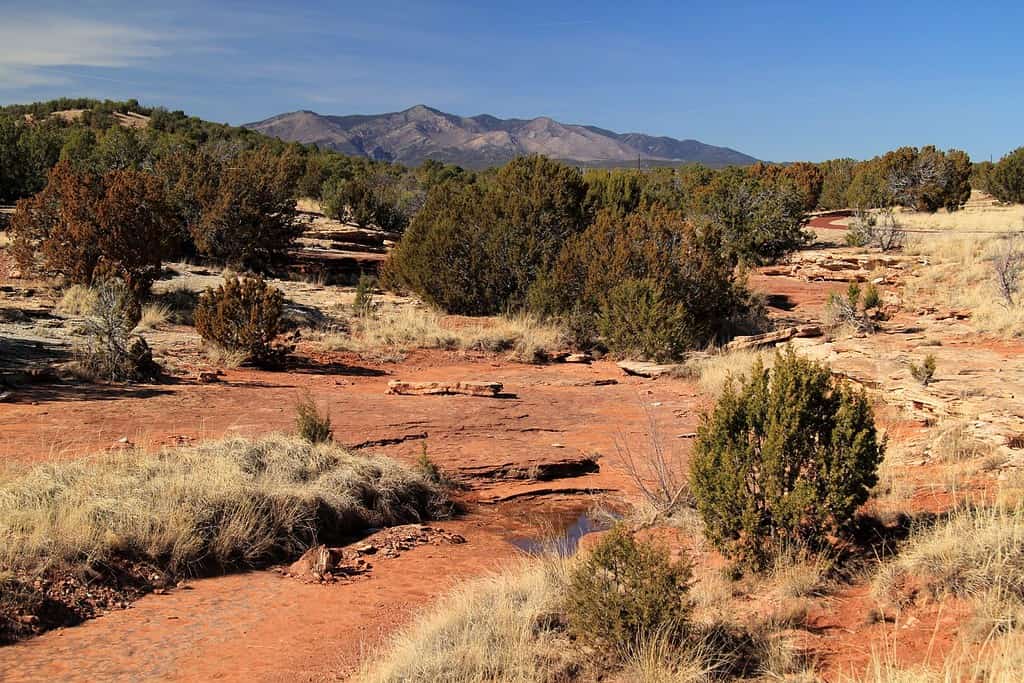
New Mexico has some of the flattest land in the country.
©William Silver/Shutterstock.com
On average, New Mexico only gets around 13 inches of rain a year. The state is mostly made up of high plains, deserts, and mountains. Being one of the driest states in the country, New Mexico only gets around one inch of rainfall each month.
Nevada
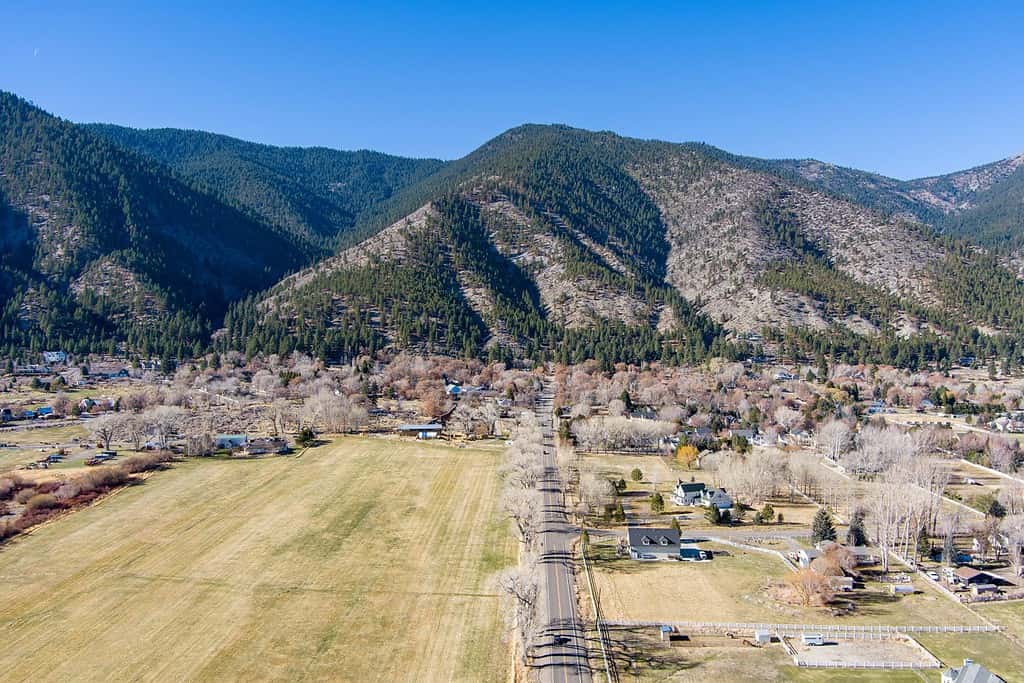
Nevada was named after the mountain range “Sierra Nevada.”
©Gchapel/Shutterstock.com
This state falls in the Sierra Nevada Mountain range and is one of the driest states in the country. This is because of its larger elevation range and the fact that the mountain blocks the moisture from the Pacific Ocean.
Arizona

The Coronado Trail Scenic Byway connects Springerville and Clifton, Arizona, in the Apache-Sitgreaves National Forest, providing spectacular views with elevations reaching over 9,000 feet.
©Different_Brian/iStock via Getty Images
The Grand Canyon State only averages around 15 inches of rainfall in the course of a year. The heat index varies throughout the state, depending on where you are. Down in the valley, surrounded by mountains, people experience a much hotter summer, whereas, up north, it’s around 20 degrees cooler. However, all the different areas are still experiencing dry heat.
Utah

On average, Utah has around 300 sunny days a year.
©Urbanchic/Shutterstock.com
Many of the driest states in the country are located in the southwest. The average annual rainfall here is 17 inches. The climate of Utah varies from desert to semi-arid, and it has the hottest summer days while being very cold in winter.
Wyoming
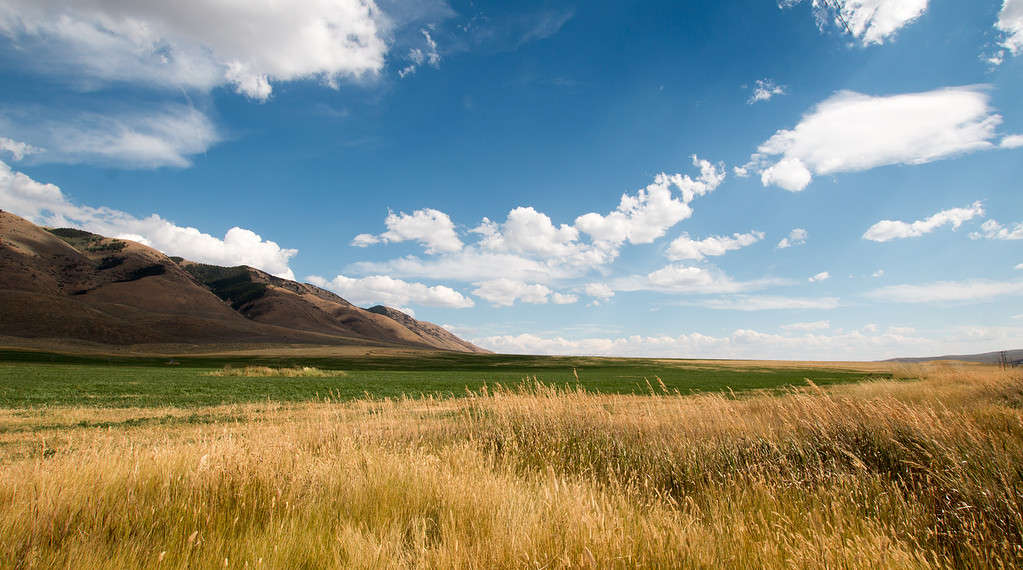
Alfalfa hayfield and wheat field under cumulus clouds in Wyoming, USA.
©htrnr/iStock via Getty Images
Wyoming is another state that falls within the mountain regions of the United States. Because of that, people living or visiting experience greater temperature extremes. The lowest recorded rainfall on record fell between five to eight inches.
Montana
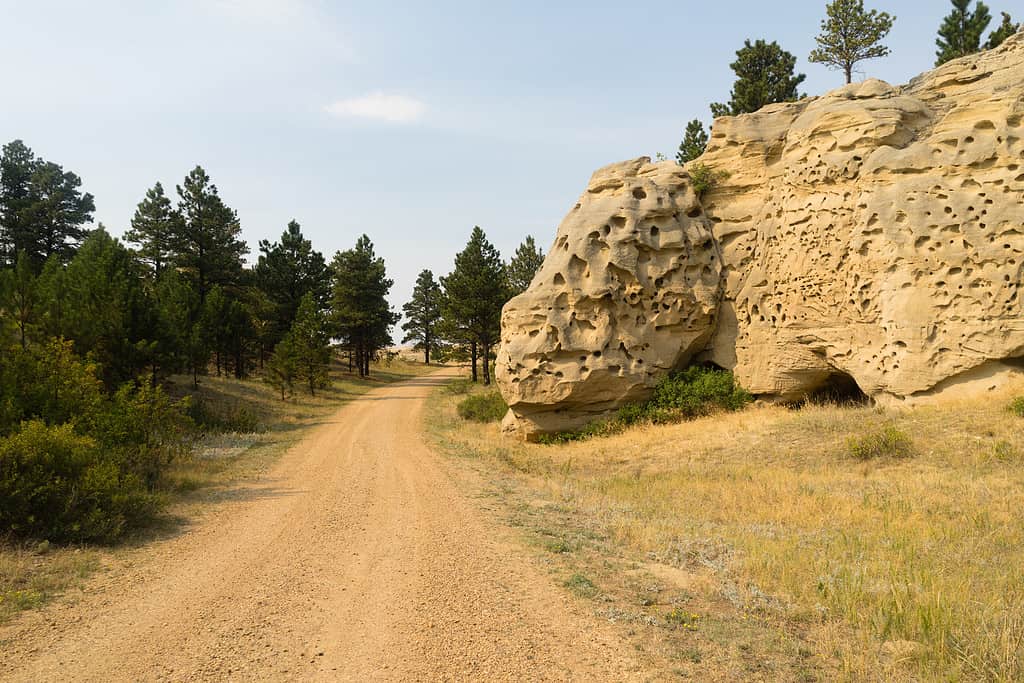
There are many gravel roads throughout the state of Montana.
©ChrisBoswell/iStock via Getty Images
Montana only receives, on average, roughly 20 inches of rainfall each year. Droughts are rather common in Montana due to its location and high temperatures. Being one of the driest states in the country, Montana has around 40% of the state in a drought.
What States Have Humid Heat?
A number of states across the country have rather humid heat. For many of these states, it is due to their geographical location and how close they are to large bodies of water. States that are near the Gulf of Mexico experience high levels of moisture due to the warm, moist air coming from the Gulf. Another contributing factor is the amount of rainfall these states get each year. The Southeastern region of the United States, which encompasses the most humid states, is known for its subtropical climate characterized by hot and humid summers.
Mississippi
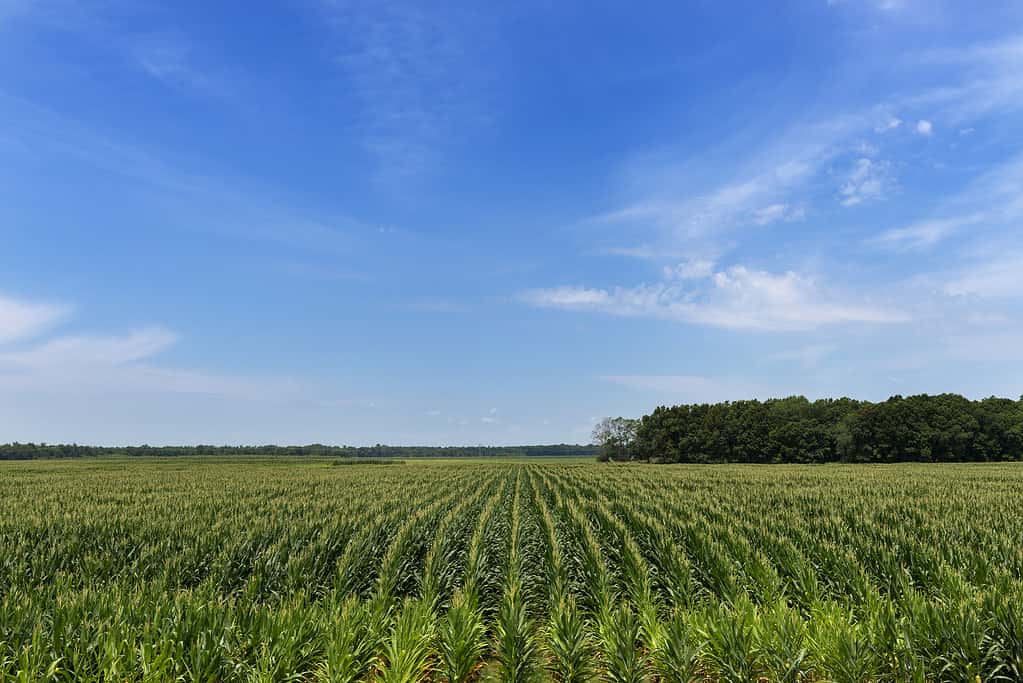
View of a cornfield in a rural area of the Mississippi State, USA.
©Tiago_Fernandez/iStock via Getty Images
Sitting at roughly 88% humidity, Mississippi is one of the most humid states in the country. This is due to the state’s location and climate. The combination of the warm waters from being so close to the Gulf of Mexico, mixed with high winds and a lot of rainfall, equals extremely high humidity.
Louisiana

Mae’s Beach Louisana provides golden sand and cool water.
©SherryLee/Shutterstock.com
Louisiana also sits rather close to the Gulf of Mexico, aiding in the state’s humidity. However, Louisiana’s coastal marshes, swamps, and bayous act as moisture reservoirs, further enhancing the humid environment.
Alabama
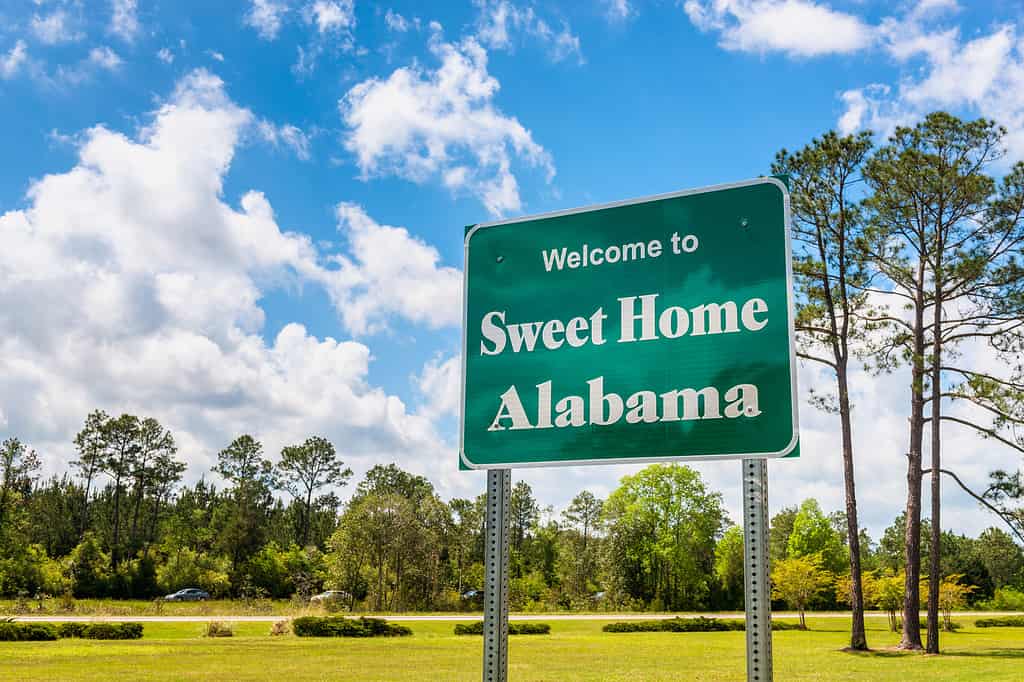
Welcome to Sweet Home Alabama Road Sign along Interstate 10 in Robertsdale, Alabama, USA, near the State Border with Florida.
©Allard1/iStock via Getty Images
This location is yet another state that is close to the Gulf of Mexico. Alabama is the third most humid state in the country. The ample rainfall and the presence of rivers and lakes in Alabama contribute to its humid conditions as well.
Florida
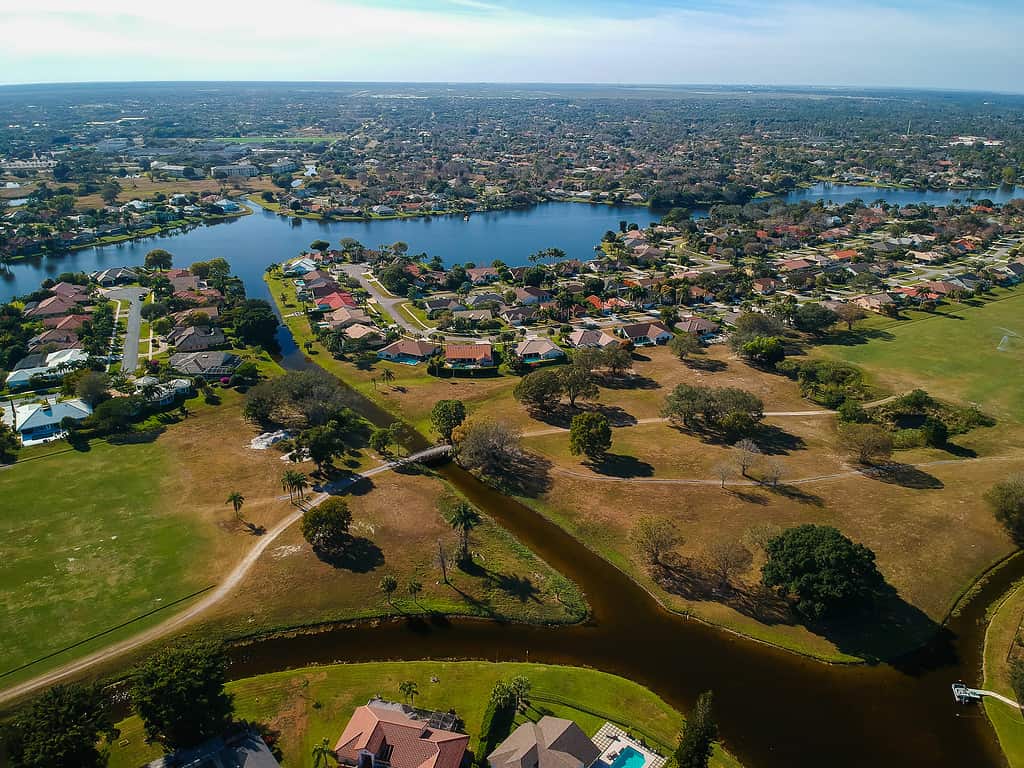
Cypress swamps are the most common freshwater swamps in the state.
©Kevin Kelly/iStock via Getty Images
The average humidity in Florida is 85%, making it very humid. The Everglades and other wetland areas within Florida play a big role in maintaining the state’s humid environment. The state’s tropical and subtropical climate, mixed with frequent rain showers and high temperatures, contributes to its overall humidity.
Georgia

An autumn look at the suspension bridge located at Tallulah Gorge State Park in Tallulah Falls, Georgia.
©Ed Williams/iStock via Getty Images
Georgia is another state that is close to both the Atlantic Ocean and the Gulf of Mexico. Because of this, humidity is quite high throughout the state. Georgia’s having both coastal plains and mountains adds to different parts of the state being more humid than others.
Arkansas
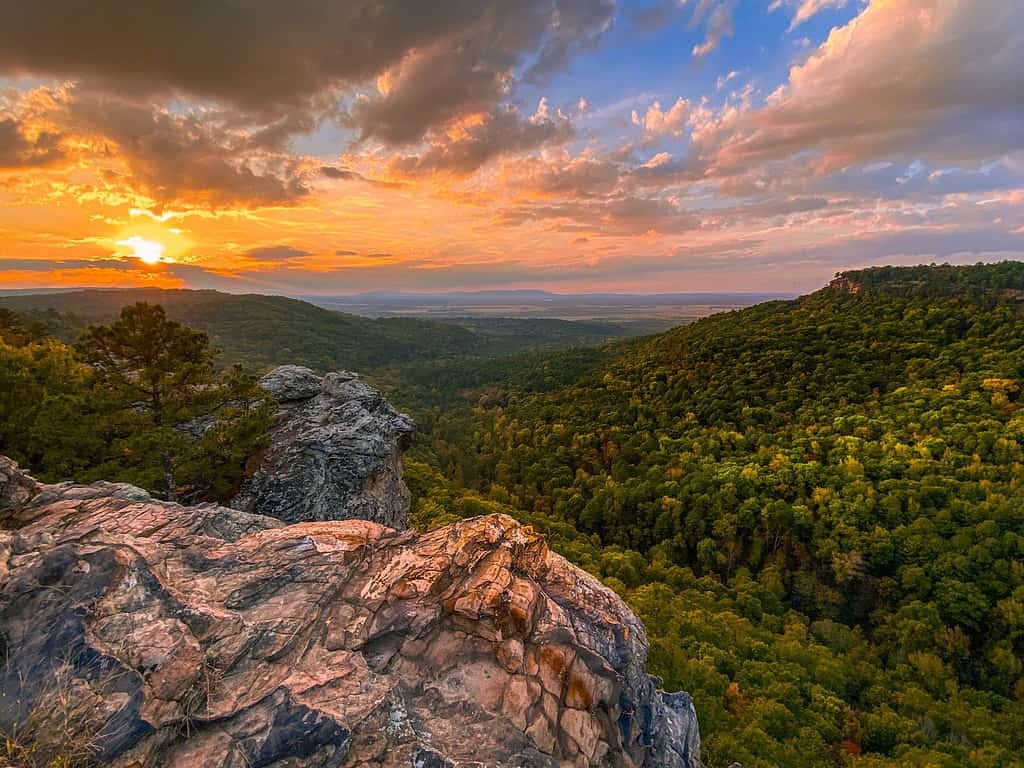
Arkansas is home to many different
alligator
farms.
©Wirestock Creators/Shutterstock.com
Located in the southeastern region of the United States, Arkansas experiences roughly 85% humidity at different times throughout the year. Just like other states on this list, it has to do with the state’s proximity to the Gulf of Mexico. The terrains of forests, mountains, and rivers just add more moisture to the area, making it more humid.
Thank you for reading! Have some feedback for us? Contact the AZ Animals editorial team.

